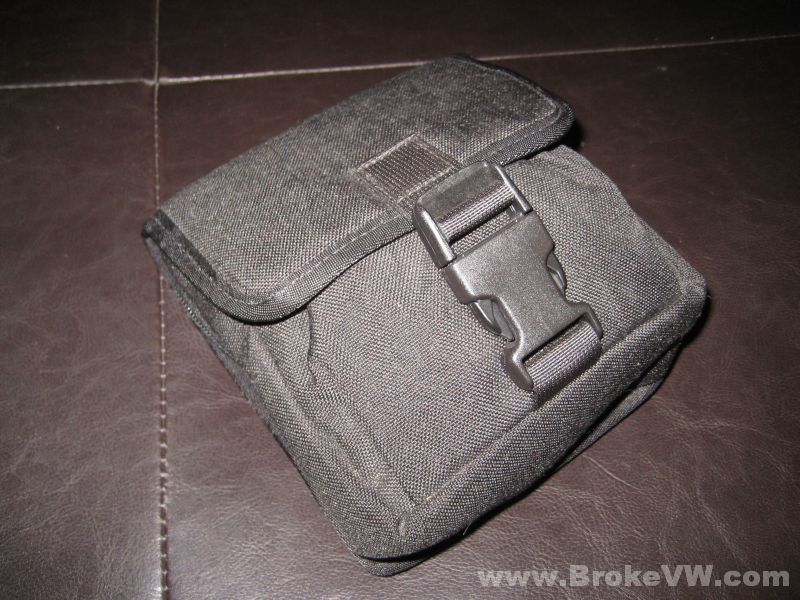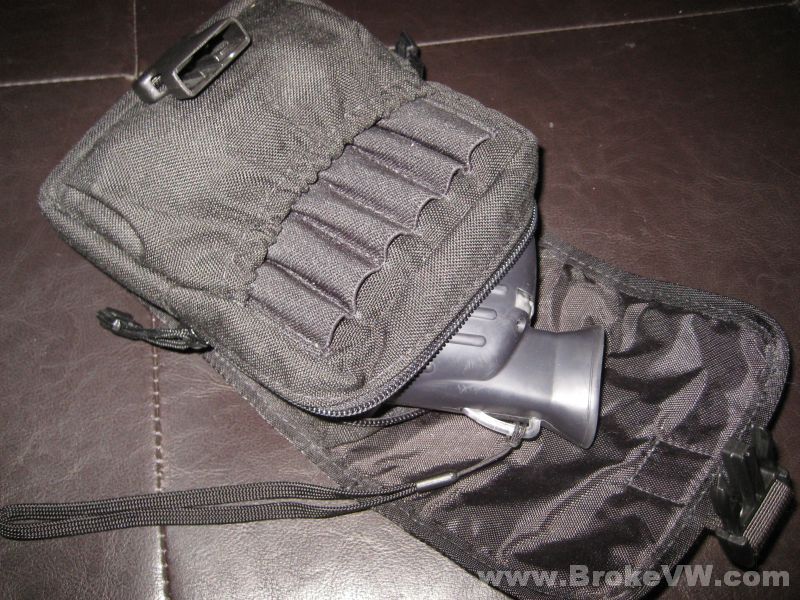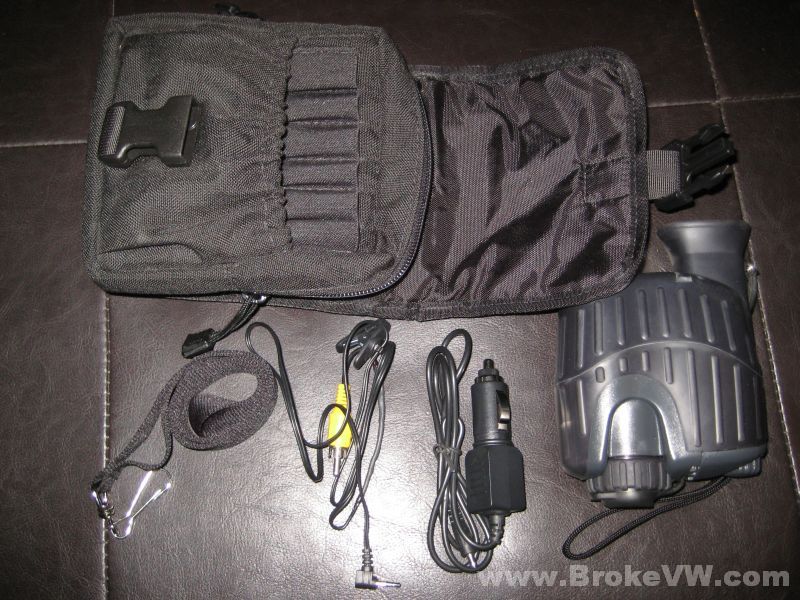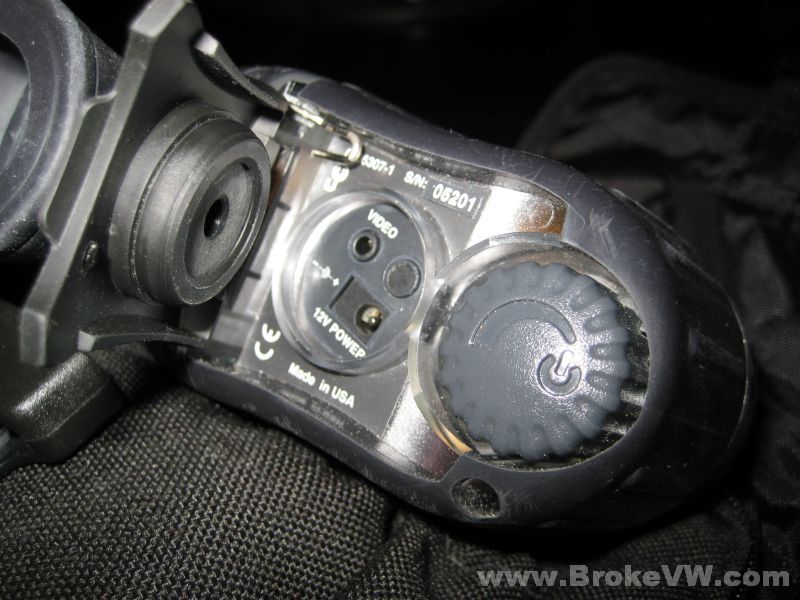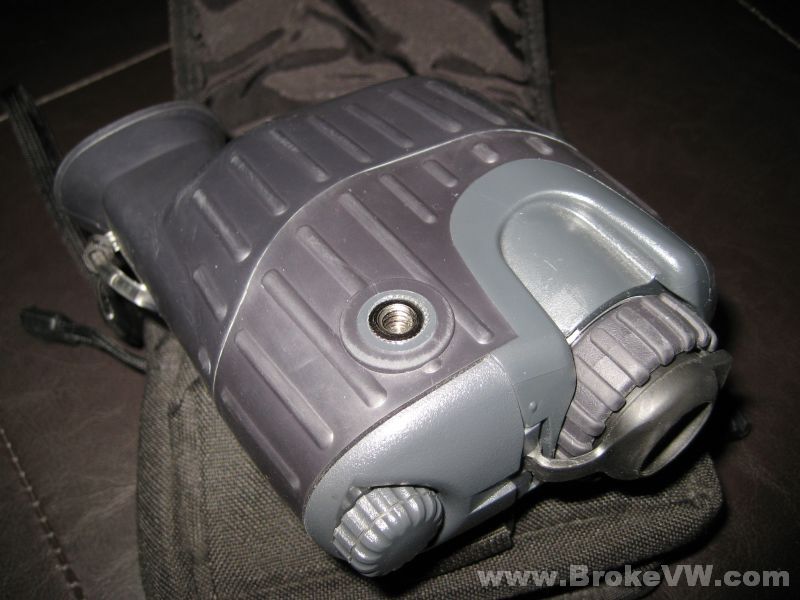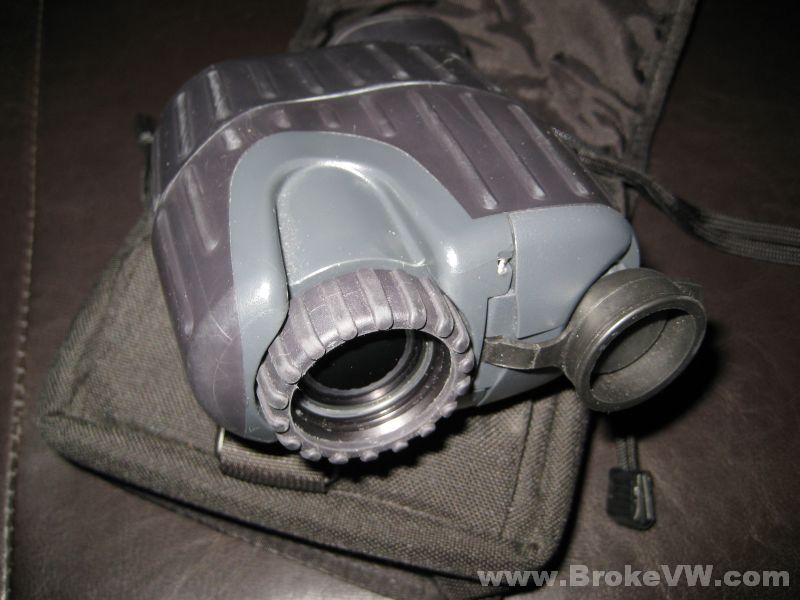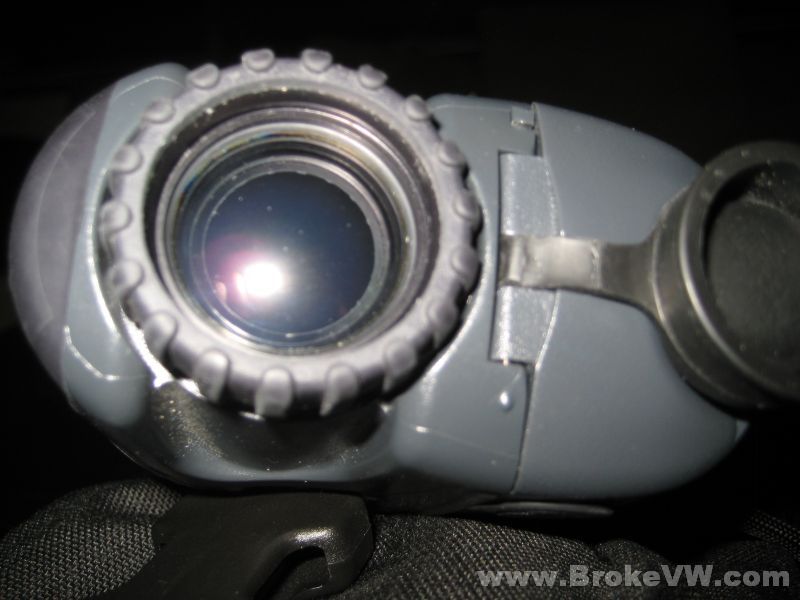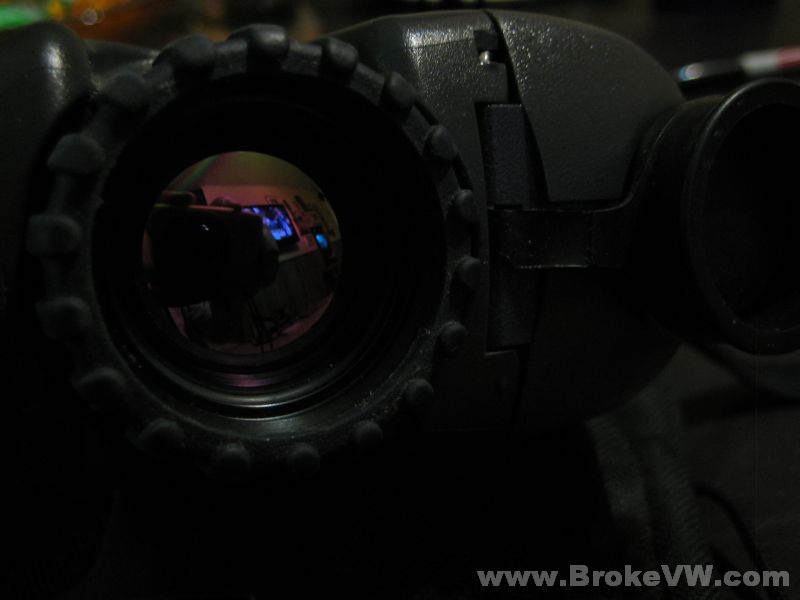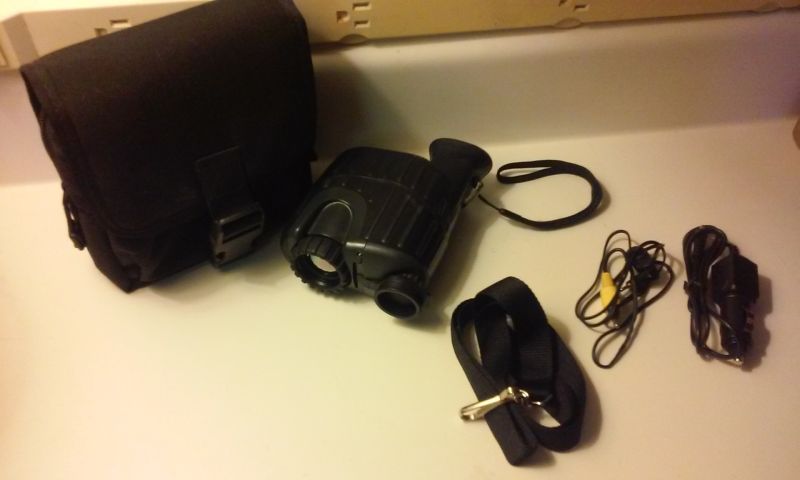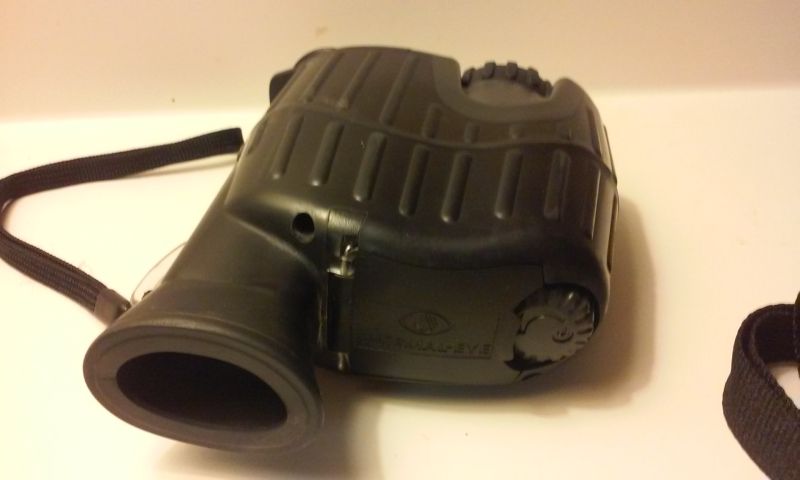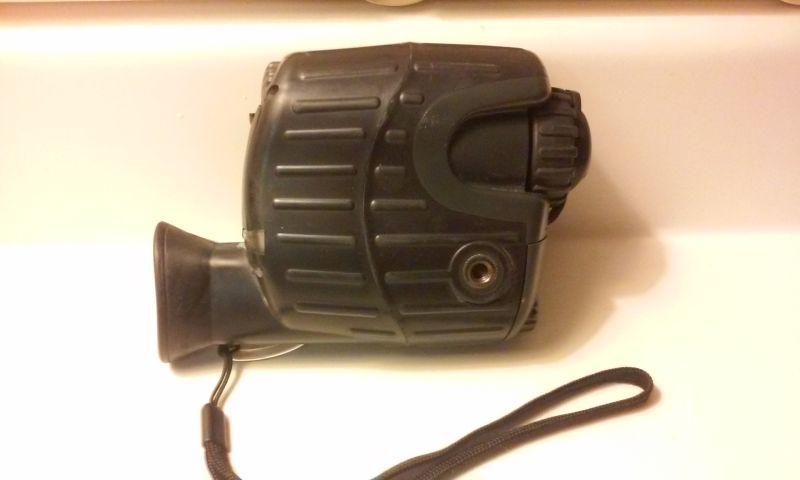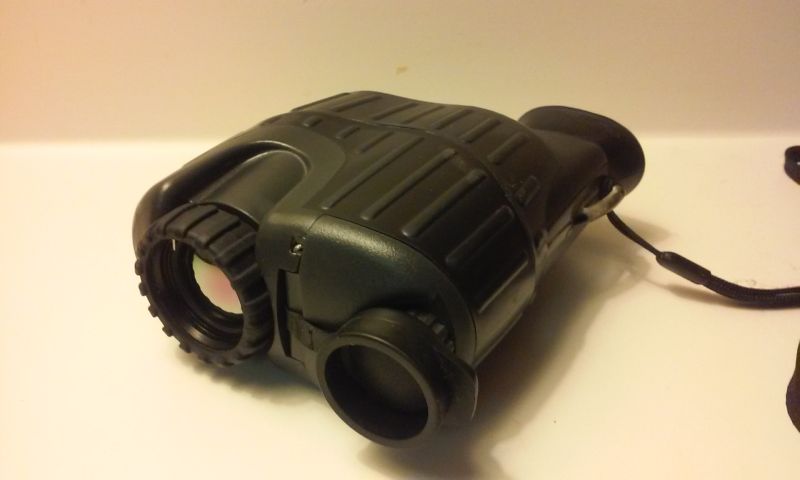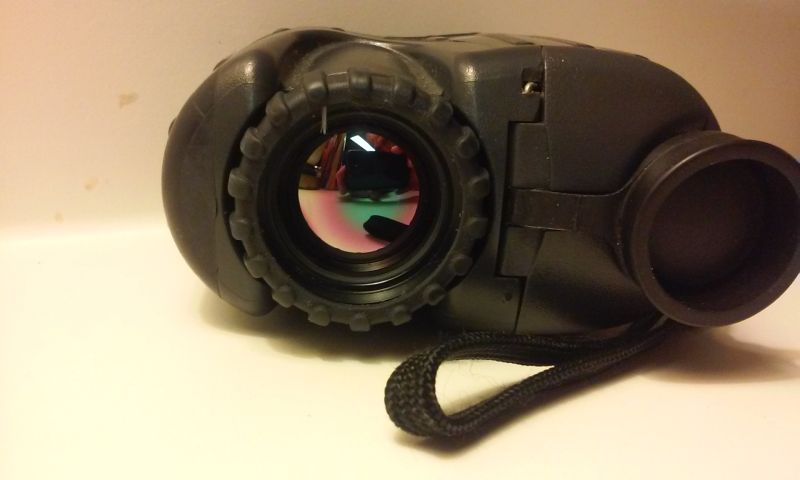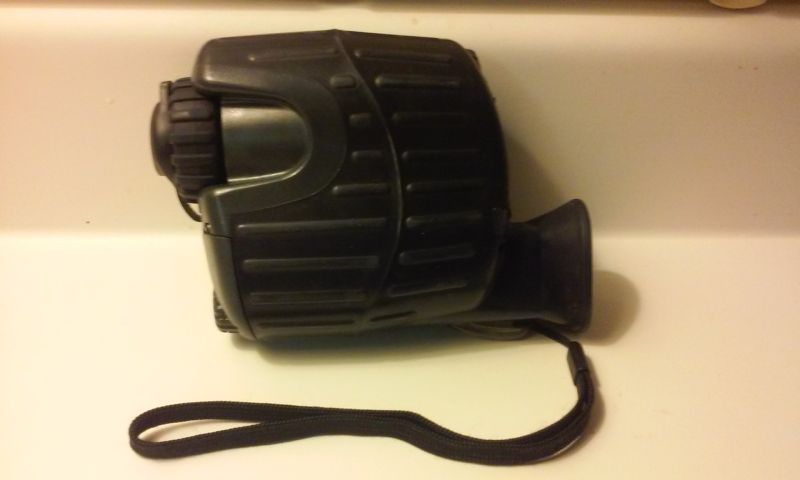Raytheon / L3 Thermal Eye X100 Thermal Imager
For Sale: $2500.00 (MSRP
$7495.95)
More info here (Ignore the price, they must be insane!): http://www.kremlinoptics.com/catalog/item/night_vision_thermal_imager___eye_x100_xp.html
There are 4 models of L3 Thermal Eye... the X50, X100, X150, and X200The differences between them will be the Resolution, the Field of View, and the Detection Range.
Resolution
will be how detailed
the image is.
The X50 uses a smaller 100 x 80 pixel resolution. The others use 160 x 120,
and this puts the X50 off my personal list.
The
Field of View
will determine how much area you see in the screen. The less you have, the
more 'tunnel vision' you get. This is where the X200 fails against the
X100... the FOV for the 200 is over 35% less... you see over 1/3rd less of
the area you view in the screen. You either must pan back and forth and up
and down to see the same amount, or miss the image. The greater the FOV, the
more you see without needing to pan and tilt.
For example: If you are
watching a building and the FOV is great enough, you can see both the left
and right sides of the building, as well as the ground in front of the
building, and the balcony or roofline of the same building. With less FOV,
you may be forced to choose between watching the left or the right, but not
both at the same time. Same with the ground in front, and the balcony on
top, you might not see both, and will have to make a choice on which to
watch.
The X200 has a smaller FOV, over 35% less when compared to the X100 or X150.
The X200 has a FOV of only 11° x 8°, compared to 17° x 12° for
the X100 and X150 models. The X50 with the poor resolution shares the same
FOV with the X200. Because of the vastly decreased FOV, I can mark the X200
from my list.
The Detection Range is 1000 feet
or 305 Meters for the X50, X100, and X150. The X200 is greater at 1500 feet
or 450 Meters. This explains the decreased FOV of the X200 compared to X100
and X150 when using the same 160 x 120 Resolution.
While it would be nice to
get the extra 500 feet of Detection Range, I personally have never had a
need for over 1000 feet of range (and it will go out a little further than
that!), and I do not wish to trade off FOV for increased range at all... it
is more important to get a thermal image of more area to me... I don't need
to know if the guy has bad circulation at 1300 feet, I'd rather not miss his
buddies walking around out of my field of view! I must not be alone in
thinking this way, the X200 can be had for less money than the X100 or X150,
and is near or LESS than the price of the cheapest X50 unit!
That leaves the X100 and X150 remaining. The X150 replaced the X100 model, and beyond that, they are the same if you don't look at the price tags. The X150 is about $150 more than the X100.
Focal Plane Array
Type & Material Amorphous Silicon Microbolometer
Pixel Count (Resolution) 160 x 120
Spectral Response 7-14 μm (filter bandwidth)
Thermal Sensitivity ≤100 mK
Thermal Imaging Performance
Startup Time ~ 5 sec
Detection Range for Human Activity Up to 1000 Feet (305 meters)
Contrast / Brightness Fully Automatic
Susceptibility to Blinding Visible Light None
Infrared Polarity White = Hot, Black = Cold
Optics
Lens Focal Length 25mm
Field of View 17° x 12°
Minimum Focus Distance ~ 3 ft. (1 meter)
Video
Output Format Analog: SMPTE-170 (cf.
NTSC monochrome) on rear outlet jack
Viewfinder Display Monochrome LCD (320 x 240 pixels)
Viewfinder Dimming Integral to power on/off switch
Power
Power Source Two (2) AA batteries Operating Time 3 Hours with alkaline
(approximately)
7 Hours with lithium (approximately)[77°F (25°C), night-time operation]
Auxiliary Power 9 to 12 VDC input on rear outlet jack
Environmental Characteristics
Operating Temperature -4°F to 140°F (-20°C to 60°C)
Storage Temperature -4°F to 176°F (-20°C to 80°C)
Water & Shock Resistance
Waterproof to 9ft (3m) submersion, buoyant in fresh water
Shockproof to 6 ft (2m) drop EMC
Compliance FCC Part 15 & CE Mark
Physical Characteristics
Size 5 1/4” L x 4 1/2” W x 2”
H (13.4 x 11.4 x 5.1 cm)
Weight 13 oz (381g), batteries installed
Eye Cup Integral to camera body with 2” eye relief
Includes
Soft carry case
Neck Strap
Wrist Strap
Manual
Lens Cloth
RCA Video Out cable
12V Auto DC power cable
Description
L-3 is proud to introduce high resolution digital thermal imaging device -Thermal-Eye X100. This compact and lightweight thermal viewer is a revolutionary thermal imaging camera designed for public safety departments, law enforcement professionals and military use. Setting the standard for durability and compactness in thermal imaging cameras, the Thermal Eye X100 is an ideal addition to any department‘s arsenal and has been battle-tested.
The affordable Raytheon
Thermal-Eye X100 provides the user with the ability to see in complete
darkness whether on a routine patrol, locating a lost child or tracking a
fugitive. Developed with L3‘s advanced amorphous silicon micro bolometer
detector, the X100 delivers the ultimate in true infrared technology, as no
lighting is required.
The Thermal-Eye X100 thermal imaging camera sets the standard for durability
and compactness in portable infrared cameras. Weighing in at only 13 ounces
with its unique design, the X100xp operates simply with one-button on/off
operation. This thermal imaging monocular is designed for the rigors of
outdoor use, it features a rubberized slip-resistant casing and can
withstand shock and vibration.
This handheld X100 unit is pocket-sized innovation also exceeds waterproof standards and conveniently operates on standard AA batteries. Other features include a protective lens cap, tripod mount for stationary use and camera strap for the officer on the go.
- Compact and light weight durable housing
- Hand Held
- Tripod Mountable
- Video Output (standard RCA Cable)
- Video / Image polarity, white-hot / black-cold
- Provide an officer the ultimate safety and security solution
- Afford officers the ability to track fugitives without exposing themselves to unnecessary danger
- Monitor suspects without their knowledge, day or night
- Provide an incredibly clear picture of the surrounding scene, up to 1000 feet, through the use of superior imaging software
- Easily spot a fugitive hiding in thick foliage or under a vehicle
- Enhanced DSP image processing
- On-screen battery level indicator
- Left or right hand operation with rugged slip resistant grip
- Tactile battery loading feature for stealth night-time operation
- Sealed cover for enclosing external video and power jacks
- Long eye-relief viewfinder for use with glasses, face shield, masks, etc.
